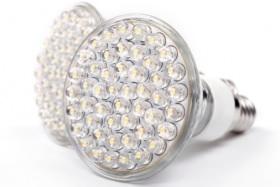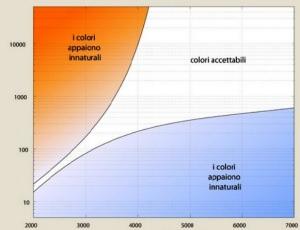Technical Lighting
Post from EditorialsKnowing the meaning of the parameters described in the technical and visual comfort lamps, helps to choose the most suitable to their needs.
The LEDs are one of the main references for the solutions of lighting in new buildings and in cases of relamping, ie replacement of old lamps in existing plants with lamps characterized by a greater power savings, less maintenance, much longer lifetimes and often superior comfort, but do not constitute the most natural solution for residential lighting.
For greater clarity, the topics covered were distributed in two different articles, the present one that describes the fundamental size of lighting and visual comfort will be followed by another which will describe the main properties of the LEDs and some practical issues such as heat dissipation and the impossibility of relamping in some cases.
Luminous Flux, Luminous Intensity, Illumination
The luminous flux is simply the amount of light emitted by a source per unit of time, its unit of measurement is the lumen (lm).
The luminous flux gives indications on the power of the light source, but provides no information about the quality of the light produced nor about its distribution in space. The light intensity is the amount of light entered into a certain direction from a light source, its unit is candel (cd) and expresses a qualitative characteristic of the light source in the direction set.
The light intensity is the amount of light entered into a certain direction from a light source, its unit is candel (cd) and expresses a qualitative characteristic of the light source in the direction set.
Generally, the lamp data sheets of the light intensity is expressed in relation to the luminous flux.
The amount of light that invests a particular surface is defined illuminance, the unit of measurement is the lux (lx). Naturally, the maximum illuminance is with reference to a surface placed perpendicularly to the intensity of the light source and decreases with the square of the distance between the source and the surface, the illuminance does not provide qualitative indications on the light emitted by a source.
The luminous efficacy of a lamp expresses the ratio between the luminous flux produced by the lamp and the electrical power necessary for its production, is in fact expressed in lumens / Watt (lm/ W).
The luminous efficacy is a quantity of fundamental importance in the comparison between the different lamps, in fact, it allows to evaluate the light energy produced by a lamp with respect to another which absorbs the same electric power, in an equivalent manner, the different energy consumption two electric lamps for the same light energy produced.
Quality Light, Life, Light, diagram Kruithoff
The magnitude that expresses the quality of the light emitted from a lamp is the color rendering index which expresses the ability of a light source to make the colors of the illuminated objects in the same way of the sunlight.
The color rendering index (Ra) can take on values between 0 and 100, the references are:
Ra great if between 90 and 100
Ra good if between 70 and 90
Ra moderate if 50 and 70 including tea
Often, in the data sheets of the lamps is a group of color rendering where, for example, 1A indicates Ra Ra greater than 90.1 B shows between 80 and 89, 2A means between 70 and 79 Ra, Ra 2B shows between 60 and 69 .
Once the standard of the operating conditions have been fixed, the average life indicated on the technical details of a lamp is defined with marine biotoxins to a representative lot of production, it expresses the number of hours of operation over which the 50% of the lamps will turn off.
The average life of a lamp is different from economic life is defined as the number of operating hours, after which the light level drops by 30% from the nominal value, it is often also denoted by L70.
Other values that can be found on common technical specifications that are L90 and L60, respectively, indicate the number of hours of operation, after which the light level drops by 10% and the one after which the level drops to 40%.
Finally, the decay curve, provided by the lamp manufacturer, describes the evolution of the nominal luminous flux over time.
 We conclude by describing the color temperature, which is considered a light radiation, it defines the temperature at which a black body should be brought to produce a radiation chromatically equal to it.
We conclude by describing the color temperature, which is considered a light radiation, it defines the temperature at which a black body should be brought to produce a radiation chromatically equal to it.We observe that the latter parameter is also present in the diagram Kruithoff, in part, that describes the regions of visual comfort by combining the values of lux on the ordinate with the color temperature on the horizontal axis.
Domestic applications should be characterized by warm lights and enveloping, with low values of lux values with respect to the diagram and color temperature medium or low, at or close to the central area of the diagram.
Otherwise, the characteristics of the LEDs associated with very high values of lux and color temperature out of the comfort zone, or acceptable colors, which are fine for non-domestic applications, which are characterized by lights not cold but warm and welcoming.
80291 REGISTERED USERS










